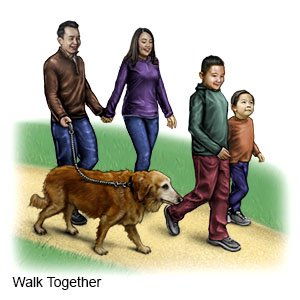Sarcoidosis
Medically reviewed by Drugs.com. Last updated on Jun 30, 2025.
What is sarcoidosis?
Sarcoidosis is a condition that causes inflammatory cells to collect in tissues and organs. These cells form granulomas (lumps). Any organ can be affected, but the lungs are the most common.
What increases my risk for sarcoidosis?
The cause of sarcoidosis is not known. Sarcoidosis may be caused by an autoimmune disease. An autoimmune disease happens when immune cells produce antibodies that attack your own body's cells. The following may increase your risk of sarcoidosis:
- Being female
- Age 20 to 40 years old
- Exposure to chemicals, metals, and substances such as clay, pine tree, pollen, or aluminum
- Germs such as bacteria, viruses, and fungi
- A family history of sarcoidosis or autoimmune disease
What are the signs and symptoms of sarcoidosis?
Signs and symptoms often include weight loss, weakness, fever, and fatigue (feeling mentally and physically tired). You may have swollen, painful lymph nodes in your neck, armpits, or groin. Granulomas may cause other signs and symptoms, depending on where they form:
- Problems thinking, remembering things, or controlling your feelings and actions
- Trouble hearing, headaches, and seizures
- Eye pain, swelling, and vision changes
- Chest pain, abnormal heartbeats, or your heart may stop beating
- A cough, trouble breathing, and hemoptysis (coughing up blood)
- Painful, swollen, red, and warm joints, muscles, and bones
- Flat or raised lumps in your skin, and red lumps on the front of your legs
- Yellow skin, kidney stones, or abdominal pain
How is sarcoidosis diagnosed?
Your healthcare provider will examine you and ask you about other health conditions you may have. Tell your provider if you have a family history of sarcoidosis or autoimmune disease. Your provider may also do an eye exam or any of the following tests:
- Blood or urine tests may be used to look for signs of inflammation or to check your liver and kidney function.
- Diascopy is used to find any color changes in a skin lump. Your provider will press on the lump with a small glass plate.
- X-ray, CT scan, or MRI pictures may show granulomas, fluid, or other problems. You may be given contrast liquid before the pictures are taken to help these show up better in pictures. Tell the healthcare provider if you have ever had an allergic reaction to contrast liquid. The MRI machine uses a powerful magnet. Do not enter the MRI room with anything metal. Metal can cause serious injury from the magnet. Tell the healthcare provider if you have any metal in or on your body.
- A biopsy will show if the granulomas are caused by sarcoidosis. A small amount of tissue will be removed from your lungs or other affected areas and tested.
Related medications
Acthar
Acthar is used for allergies, ankylosing spondylitis, chorioditis, chorioretinitis, erythema ...
Adalimumab
Adalimumab is used to treat plaque psoriasis, Crohn's disease, ulcerative colitis, rheumatoid ...
Enhertu
Enhertu is a treatment for breast cancer, stomach cancer, and non-small cell lung cancer with HER2 ...
Imuran
Imuran is used for atopic dermatitis, autoimmune hepatitis, chronic active hepatitis, chronic ...
Kenalog-40
Kenalog-40 is a long-acting corticosteroid injection for intramuscular (into the muscle) or ...
Azasan
Azasan is used for atopic dermatitis, autoimmune hepatitis, chronic active hepatitis, chronic ...
Dexamethasone Intensol
Dexamethasone Intensol is used for addison's disease, adrenal insufficiency, adrenocortical ...
H.P. Acthar Gel
H.P. Acthar Gel is used for allergies, ankylosing spondylitis, chorioditis, chorioretinitis ...
HiDex
HiDex is used for allergic rhinitis, ankylosing spondylitis, aspiration pneumonia, asthma, acute ...
Triamcinolone
Triamcinolone is used to treat allergies, skin conditions, ulcerative colitis, and arthritis. Learn ...
How is sarcoidosis treated?
Sarcoidosis usually does not need treatment. The following may help prevent or relieve your symptoms:
- Medicines may be given to treat pain, swelling, or fever. Medicines may also be given to help your heart beat properly or to slow your immune system.
- Surgery may be used to remove granulomas that cause severe signs and symptoms. Healthcare providers may use lasers (light beams) or dermabrasion to remove or smooth skin lumps.
Treatment options
The following list of medications are related to or used in the treatment of this condition.
How can I manage my symptoms?
- Eat a variety of healthy foods. Healthy foods include fruits, vegetables, whole-grain breads, low-fat dairy products, beans, lean meats, and fish. Ask if you need to be on a special diet.

- Be physically active, as directed. Ask your healthcare provider about the best physical activity plan for you. Physical activity may help decrease fatigue and improve your symptoms.

- Do not smoke. Nicotine and other chemicals in cigarettes and cigars can cause blood vessel and lung damage. Ask your provider for information if you currently smoke and need help to quit. E-cigarettes and smokeless tobacco still contain nicotine. Talk to your provider before you use these products.
Call your local emergency number (911 in the US) if:
- You cannot feel your arms or legs, or they become weak.
- You have seizures.
- You have sudden trouble breathing.
- You have severe chest pain.
When should I seek immediate care?
- You have trouble thinking and remembering things.
When should I call my doctor?
- You have a fever.
- You have a severe headache and pain in your neck.
- You have chills, a cough, or feel weak and achy.
- You have pain, redness, and swelling in your muscles and joints.
- Your skin is itchy, swollen, or has a rash.
- You have questions or concerns about your condition or care.
Care Agreement
You have the right to help plan your care. Learn about your health condition and how it may be treated. Discuss treatment options with your healthcare providers to decide what care you want to receive. You always have the right to refuse treatment. The above information is an educational aid only. It is not intended as medical advice for individual conditions or treatments. Talk to your doctor, nurse or pharmacist before following any medical regimen to see if it is safe and effective for you.© Copyright Merative 2025 Information is for End User's use only and may not be sold, redistributed or otherwise used for commercial purposes.
Learn more about Sarcoidosis
Treatment options
Symptoms and treatments
Further information
Always consult your healthcare provider to ensure the information displayed on this page applies to your personal circumstances.
